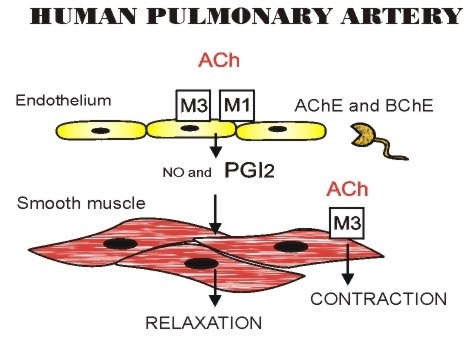Muscarinic receptor in the human vessels and PGI2 release
Results in isolated human pulmonary arteries (HPA) support the notion that the ACh-induced contraction involves only M3 receptors on the smooth muscle, whereas activations of M3 and M1 receptors on the endothelium produce relaxation (Norel et al., Br. J. Pharmacol., 1996). In human pulmonary veins (HPV), no contraction is induced by ACh and the activation of M1 receptors on the endothelium produces relaxation (Walch et al., Br. J. Pharmacol., 2000).
HPA are more sensitive to the relaxant effect of ACh than human pulmonary veins (Walch et al., Br. J. Pharmacol., 1997). Measurements of 6-keto-PGF1a, the stable metabolite of PGI2 , after a challenge with ACh suggest that this difference could be partly explained by a greater release of PGI2 by HPA versus HPV (Walch et al., J. Physiol. Paris, 1998). |



